
Roots
Before the hum of modern life, before the shelves brimmed with formulated concoctions, there existed a profound connection to the earth’s bounty, a silent conversation between humanity and the verdant landscapes of Africa. This communion gave rise to traditions, not merely of survival, but of profound self-care, where the nighttime hours offered a canvas for hair’s replenishment. For generations, African ancestors, with a wisdom passed through oral traditions and hands-on teaching, turned to the very ground beneath their feet and the trees that reached skyward, seeking solace and sustenance for their crowning glory. These practices were not just about aesthetics; they were about wellness, about honoring heritage, and about sustaining the intrinsic vitality of textured strands.
The quest for healthy hair was deeply intertwined with daily rhythms and seasonal shifts. The ingredients chosen for nighttime applications were often those readily available within their communities, those known through generations of observation to possess specific properties that nurtured the hair and scalp. This deep understanding of local flora meant that what was applied to the hair was often a mirror of what sustained the body, reflecting a holistic view of well-being.

What Indigenous Plant Offerings Sustained Hair at Night?
The spectrum of natural ingredients utilized by African ancestors for nighttime hair care is as varied as the continent itself, each region boasting its unique botanical treasures. Yet, certain ingredients stood as common threads, recognized for their efficacy across diverse communities. These were often plant-derived oils, butters, and extracts, each possessing unique qualities that contributed to hair’s resilience and vibrancy during sleep. The cool, quiet hours of night provided an ideal window for these potent natural agents to work their restorative magic, allowing for deep absorption and repair without the interference of sun or daily activities.
Ancestral African nighttime hair care relied on readily available plant-derived oils, butters, and extracts, chosen for their inherent properties to nourish and restore hair during rest.
Among the most celebrated was Shea Butter, a golden treasure extracted from the nuts of the shea tree (Vitellaria paradoxa), indigenous to West Africa. Its richness in fatty acids, particularly oleic and stearic acids, rendered it an exceptional emollient, capable of sealing moisture into the hair shaft. Applied before bed, it formed a gentle, breathable layer, protecting strands from friction against sleeping surfaces and preventing moisture loss throughout the night. This consistent application helped maintain the hair’s softness and pliability, guarding against brittleness and breakage.
Another significant ingredient was Palm Oil, particularly red palm oil, derived from the fruit of the oil palm (Elaeis guineensis). This oil, deeply colored by its carotenoid content, including beta-carotene, served as a potent source of antioxidants. While its primary use was culinary, its application to hair was also documented, providing a conditioning treatment that contributed to the hair’s strength and luster. Its occlusive properties would have helped to coat and protect hair fibers during the night, reducing damage from mechanical stress.

How Did Ancestral Practices Shape Hair Health?
The application of these ingredients was often part of a larger ritual, a quiet moment of connection with oneself and with the ancestral wisdom that guided these practices. Before the evening application, hair might have been gently detangled using fingers or wide-toothed combs crafted from wood or bone. The chosen oil or butter would then be warmed slightly, either by hand or near a gentle heat source, allowing for easier spread and deeper penetration. This warming ritual itself would have been a soothing prelude to sleep, a sensory experience that reinforced the nurturing aspect of the care.
The consistent use of these natural emollients over time created a cumulative benefit, fortifying the hair’s natural barrier and improving its overall structural integrity. Unlike modern synthetic conditioners, which often coat the hair temporarily, these natural butters and oils worked with the hair’s intrinsic composition, supporting its long-term health. The deep conditioning afforded by these nighttime treatments would have been particularly beneficial for coily and kinky hair textures, which are inherently prone to dryness due to their structural configuration.
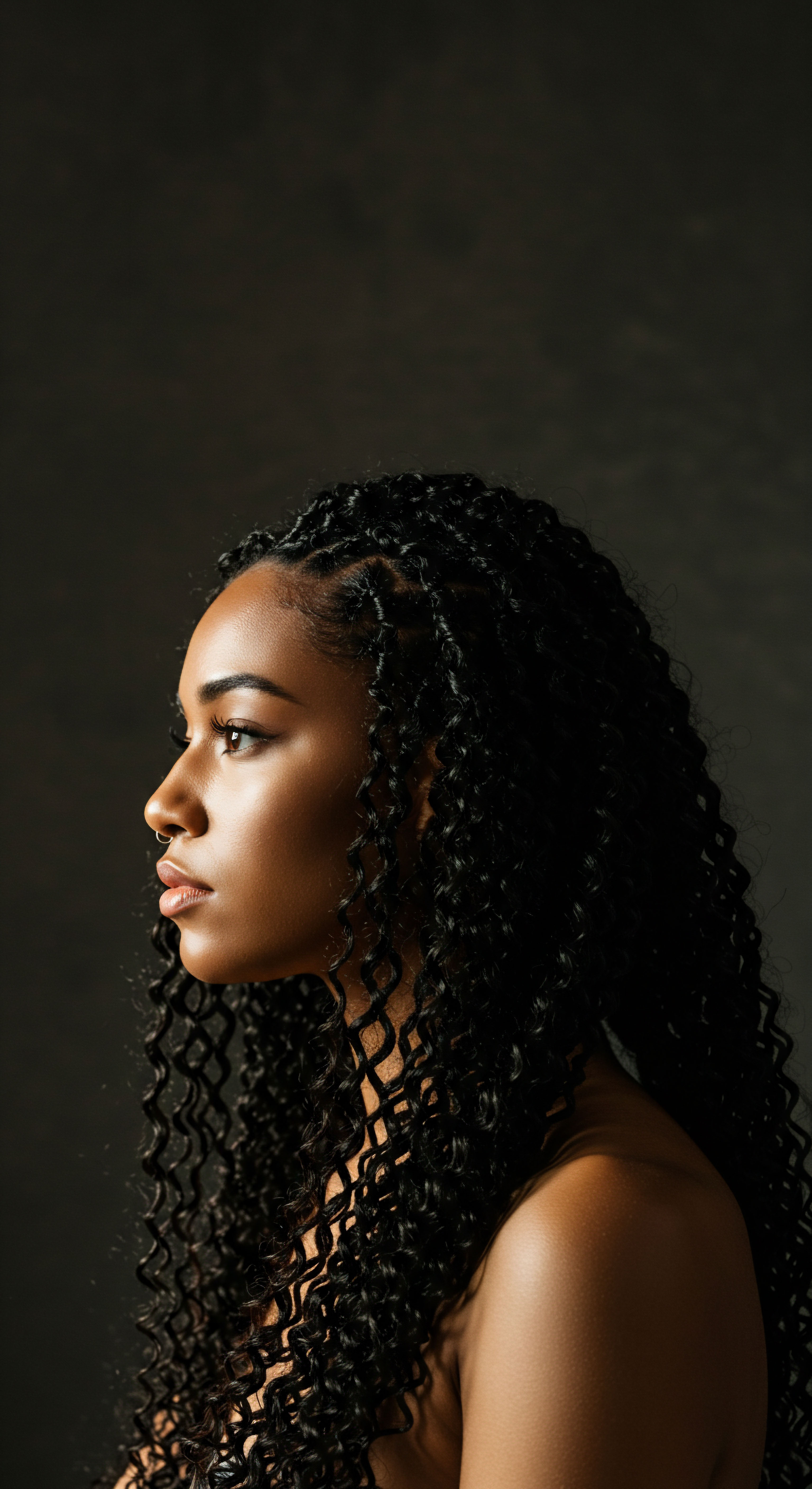
Ritual
As the sun dipped below the horizon, painting the sky in hues of deep orange and purple, a different kind of preparation would begin in many African households. This was the time for the quiet work of restoration, a time when the practical wisdom of daily care met the gentle art of nighttime hair preservation. The transition from the day’s activities to the serenity of evening often involved specific steps designed to protect and replenish hair, ensuring it remained resilient and vibrant. This was not merely about applying a substance; it was about engaging in a sequence of mindful actions, a quiet conversation with one’s strands, anticipating the dawn.
The choices made for nighttime hair care were deeply rooted in a pragmatic understanding of hair’s vulnerability, particularly during sleep. Friction against sleeping surfaces, the potential for tangling, and environmental dryness all posed threats to hair integrity. Ancestral practices sought to mitigate these challenges through thoughtful application of nature’s offerings.

What Nighttime Protective Measures Were Employed?
Beyond the application of conditioning ingredients, African ancestors often employed various methods to protect their hair physically during sleep. These protective measures were crucial, working in concert with the natural emollients to shield delicate strands from damage.
- Hair Braiding ❉ Often, hair was sectioned and braided into larger plaits or twists before bed. This simple yet effective method minimized tangling and friction, preventing knots and breakage that could occur from unrestrained hair rubbing against sleeping surfaces. The braids also helped to keep the applied oils and butters concentrated on the hair, allowing for deeper absorption.
- Hair Wrapping ❉ While not always with the silk or satin materials common today, ancestral communities utilized various cloths or wraps made from natural fibers. These coverings served to protect the hair from dust, maintain moisture, and reduce friction. The choice of material would have varied by region and availability, but the principle remained consistent ❉ create a barrier.
- Sleeping Surfaces ❉ Though not an ingredient, the surfaces upon which one slept played a role. Mats woven from natural fibers or animal hides, while perhaps not as smooth as modern fabrics, were part of the environmental context. The protective styles and wraps would have been even more significant in these settings to minimize abrasive contact.
The systematic application of ingredients like Castor Oil, particularly the dark, roasted variety known as Jamaican black castor oil (though similar processes existed in other parts of Africa), provided a thick, viscous layer that coated the hair. Its rich fatty acid profile, including ricinoleic acid, is known to have humectant properties, drawing moisture from the air to the hair, which would have been particularly beneficial during the long hours of sleep. This oil was often used for scalp conditioning as well, believed to support hair growth and thickness.
Nighttime rituals included physical protection, like braiding and wrapping, alongside ingredient application to preserve hair integrity and maximize the benefits of natural emollients.
Another common ingredient was Coconut Oil, particularly in coastal regions where coconut palms thrived. While often associated with Asian traditions, its use was also present in parts of East Africa. Its molecular structure allows it to penetrate the hair shaft, reducing protein loss during washing, which is a significant benefit when applied overnight as a pre-shampoo treatment or a leave-in conditioner. This deep penetration would have fortified the hair from within, offering a layer of internal strength.

How Did Community Wisdom Guide Nighttime Care?
The knowledge of these practices was not codified in books but lived within the community. Grandmothers taught mothers, who in turn taught their daughters, creating an unbroken chain of practical wisdom. This oral tradition ensured that the nuances of ingredient selection, preparation, and application were preserved and adapted across generations. The efficacy of these rituals was validated through observation and lived experience, a testament to the power of collective knowledge.
Consider the widespread reverence for Baobab Oil, extracted from the seeds of the majestic baobab tree (Adansonia digitata), a symbol of life and longevity across many African landscapes. This oil, with its light texture and richness in vitamins A, D, E, and F, alongside omega fatty acids, would have been applied for its nourishing and softening qualities. Its non-greasy feel would have made it a comfortable choice for overnight application, allowing hair to breathe while still receiving substantial conditioning. The tradition of using baobab extended beyond hair to skin care, underscoring its broad recognition as a valuable natural resource.
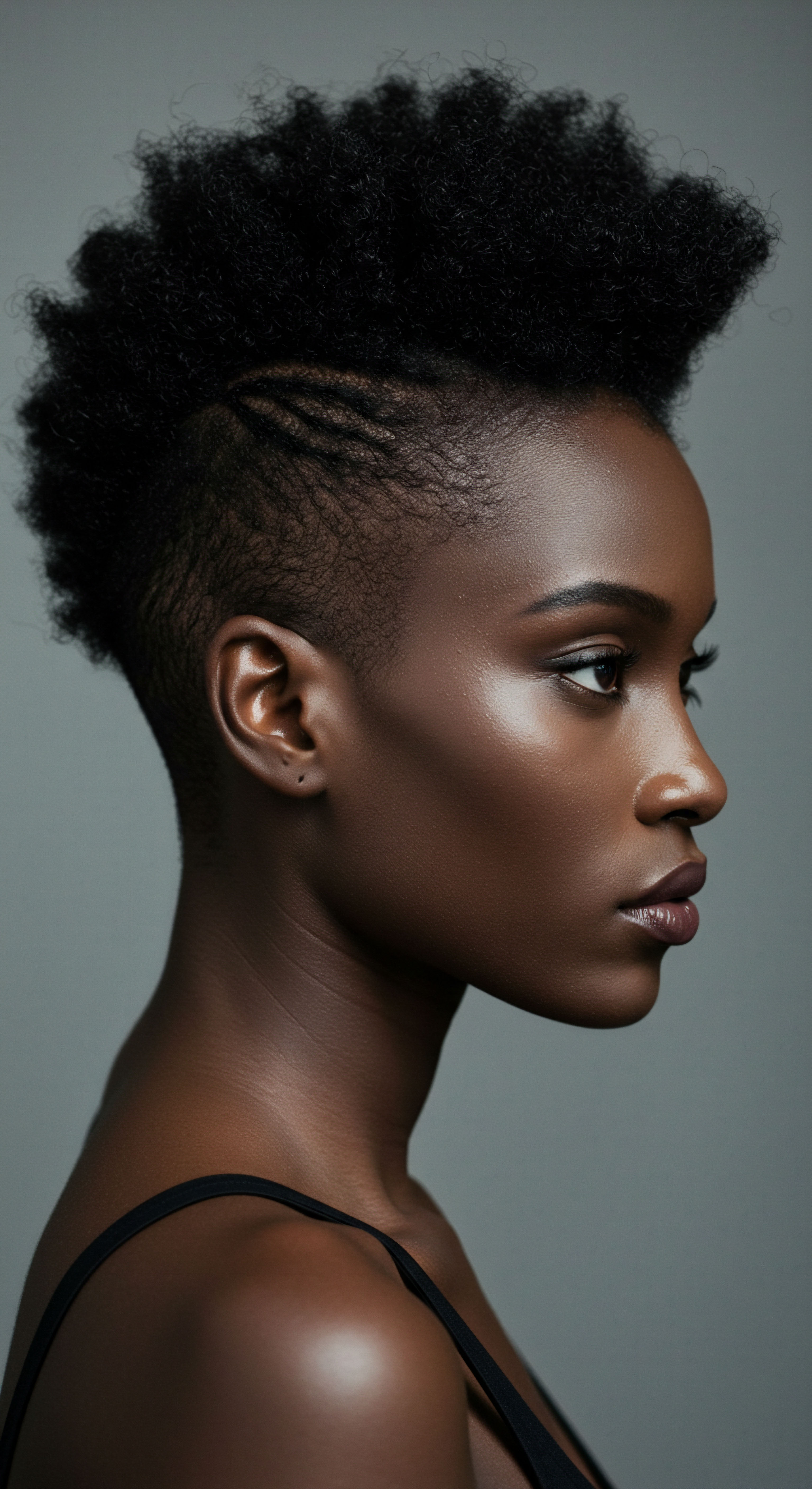
Relay
To truly comprehend the depth of ancestral African nighttime hair care, we must move beyond a simple list of ingredients and into the complex interplay of cultural context, environmental adaptation, and a nuanced understanding of botanical chemistry. The practices were not static; they were dynamic responses to specific ecological realities and cultural imperatives, evolving over millennia. This journey into the past reveals not just what was used, but the profound ‘why’ behind these choices, a sophisticated system of care that resonates with modern scientific inquiry.
The very act of nighttime care was often a deliberate counterpoint to the day’s exposures. Sunlight, dust, and physical activity could strip hair of its natural oils and moisture. The evening became a time for restoration, a strategic window when the body rested and the hair could absorb and mend without external stressors. This intentionality speaks to a deep, empirical understanding of hair physiology, long before microscopes revealed its intricate structure.
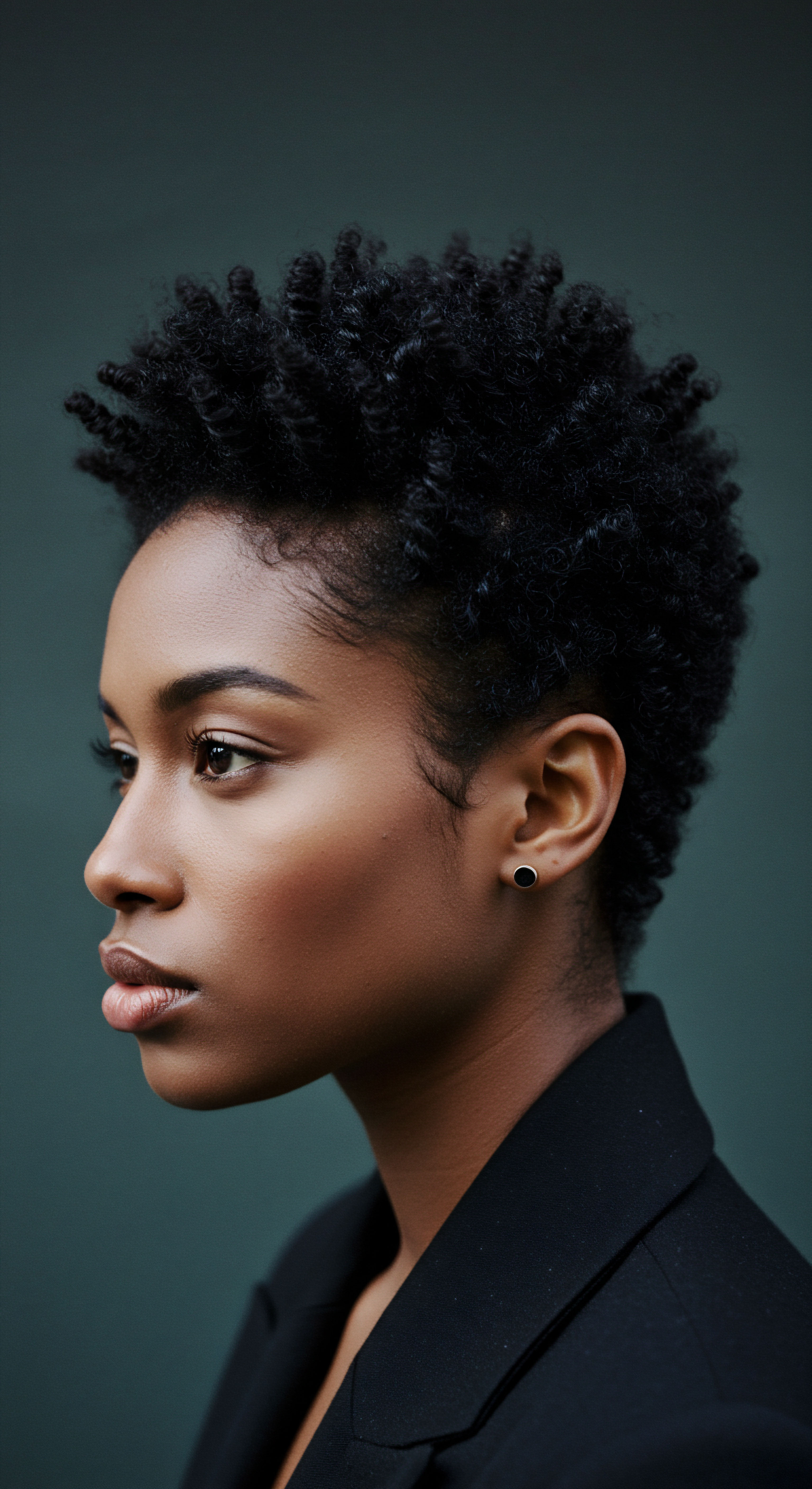
What Specific Botanical Chemistry Informed Ancestral Choices?
The efficacy of the ingredients chosen by African ancestors can be illuminated by modern phytochemical analysis, revealing the underlying chemical compounds responsible for their observed benefits. This convergence of traditional knowledge and contemporary science offers a compelling perspective.
| Ingredient Shea Butter (Vitellaria paradoxa) |
| Primary Chemical Constituents Oleic acid, Stearic acid, Linoleic acid, Palmitic acid, Triterpenes, Vitamin E, Vitamin A |
| Hair Benefit (Nighttime Application) Deep emollient, moisture seal, anti-inflammatory for scalp, UV protection (minor), barrier formation against friction. |
| Ingredient Baobab Oil (Adansonia digitata) |
| Primary Chemical Constituents Oleic acid, Linoleic acid, Palmitic acid, Alpha-linolenic acid, Vitamins A, D, E, F |
| Hair Benefit (Nighttime Application) Lightweight moisture, elasticity, scalp conditioning, antioxidant protection. |
| Ingredient Castor Oil (Ricinus communis) |
| Primary Chemical Constituents Ricinoleic acid (90%), Oleic acid, Linoleic acid |
| Hair Benefit (Nighttime Application) Humectant, protective coating, scalp circulation (anecdotal), viscosity for sealing. |
| Ingredient Red Palm Oil (Elaeis guineensis) |
| Primary Chemical Constituents Palmitic acid, Oleic acid, Linoleic acid, Carotenoids (alpha-carotene, beta-carotene), Vitamin E (tocotrienols) |
| Hair Benefit (Nighttime Application) Antioxidant protection, deep conditioning, color deposit (subtle), barrier support. |
| Ingredient Coconut Oil (Cocos nucifera) |
| Primary Chemical Constituents Lauric acid, Myristic acid, Palmitic acid, Capric acid |
| Hair Benefit (Nighttime Application) Penetrates hair shaft to reduce protein loss, adds luster, light barrier. |
| Ingredient This table provides a glimpse into the scientific basis for the ancestral wisdom in selecting these natural resources for hair health. |
Consider the often-overlooked African Black Soap, a traditional cleanser originating from West Africa, particularly Ghana. While primarily a cleansing agent, its gentle, moisturizing properties, derived from plantain skins, cocoa pods, palm leaves, and shea butter, meant that even the act of cleansing could contribute to hair’s hydration rather than stripping it. A mild solution of black soap might have been used for a gentle evening cleanse, preparing the hair for deeper conditioning. Its saponified oils would leave behind a subtle film, aiding in moisture retention overnight.
Ancestral hair care was a sophisticated system, with ingredients selected for their inherent chemical properties and applied through intentional nighttime rituals.
The knowledge of how these ingredients interacted with hair was not based on laboratory analysis but on generations of keen observation. For instance, the use of a plant mucilage, such as that derived from the Okra Plant (Abelmoschus esculentus), which yields a slippery, conditioning liquid when boiled, served as a natural detangler and humectant. While not always a primary overnight treatment, its application before bed would have significantly aided in managing tangles and setting the hair for protective styles, thereby preventing breakage during sleep. This reflects an understanding of the need for slip and moisture for detangling, a concept still central to textured hair care today.
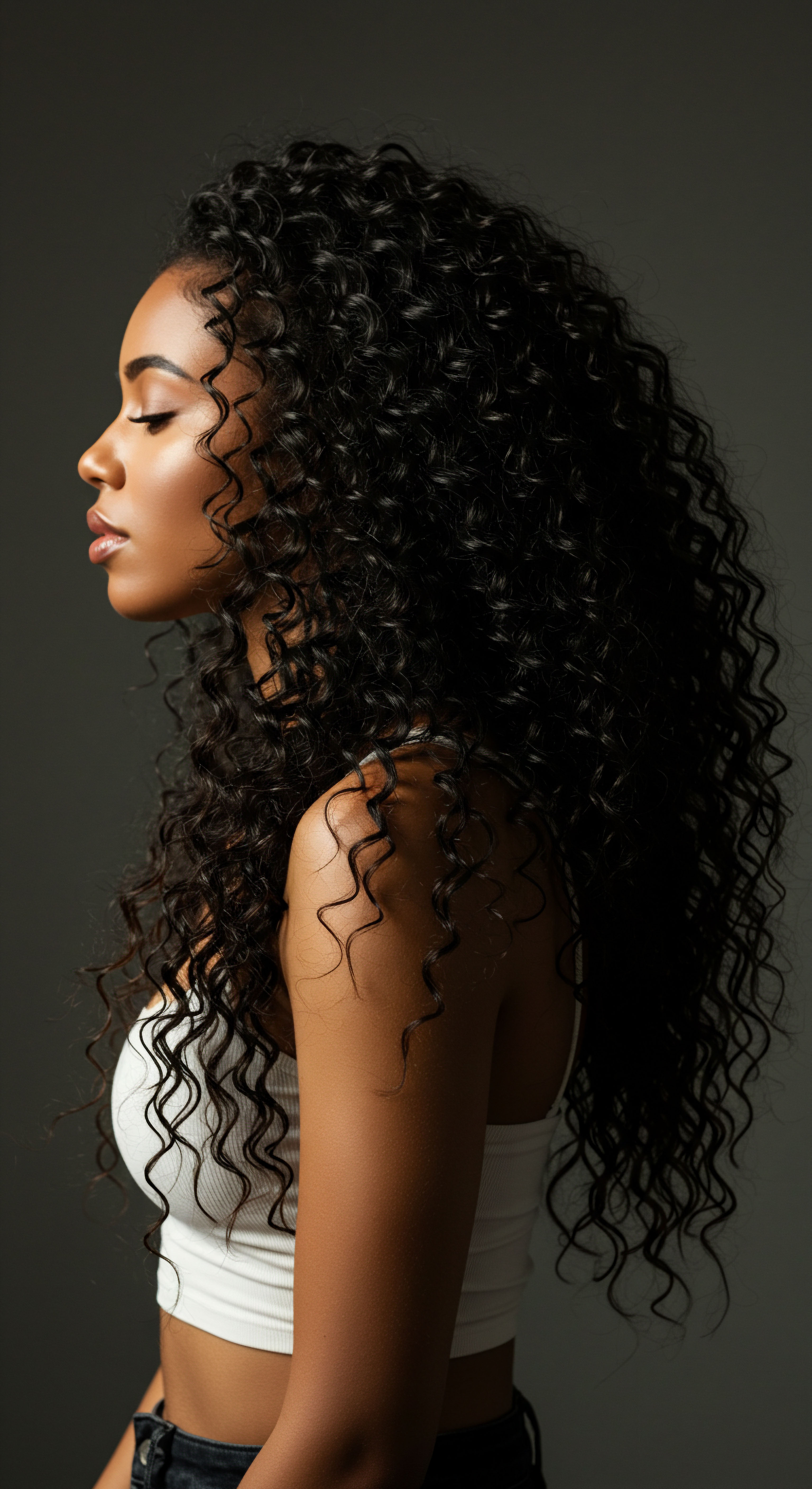
How Did Ancestral Practices Shape Hair’s Resilience?
The consistent, long-term application of these natural ingredients, coupled with protective styling, contributed significantly to the resilience of ancestral African hair. This is not merely anecdotal; scientific understanding of hair structure and environmental stressors supports the efficacy of these practices.
One compelling data point comes from a study on the effects of traditional African oils on hair. Research has indicated that certain oils, rich in saturated and monounsaturated fatty acids, can penetrate the hair cortex, reducing hygral fatigue (damage from repeated swelling and drying) and minimizing protein loss. For instance, a study published in the Journal of Cosmetic Science examined the penetration of various oils into human hair and found that coconut oil, due to its lauric acid content, was capable of reducing protein loss for both damaged and undamaged hair when applied as a pre-wash or post-wash treatment.
While this study is modern, it provides a scientific underpinning for the long-observed benefits of using such oils, particularly in a consistent overnight regimen. The slow, sustained absorption during sleep would have amplified these protective qualities, building hair strength over time.
This continuous cycle of cleansing with gentle agents, deeply conditioning with rich butters and oils, and protecting through styling created a self-sustaining system. It allowed hair to maintain its inherent strength and flexibility, reducing the cumulative damage that can lead to breakage and thinning. The practices were not about quick fixes but about cultivating long-term hair health, reflecting a patient and profound respect for the body’s natural processes. The deep pigments present in certain ingredients, like red palm oil, also offered a subtle, natural tint, while providing antioxidant benefits that guarded against environmental degradation, an additional layer of care often overlooked in modern formulations.

Reflection
The quiet whispers of ancestral wisdom continue to resonate, offering not just a glimpse into the past, but a guiding light for present-day textured hair care. The ingredients and rituals of African ancestors for nighttime hair care stand as a powerful testament to the enduring strength of natural solutions and the profound connection between humanity and the earth’s gifts. Their practices, born from observation and sustained by community, remind us that true hair vitality stems from gentle, consistent care, a deep understanding of natural resources, and a reverence for the delicate dance of replenishment that occurs during the stillness of night. This legacy invites us to look beyond fleeting trends, to seek a deeper relationship with our hair, rooted in timeless wisdom and nature’s quiet power.
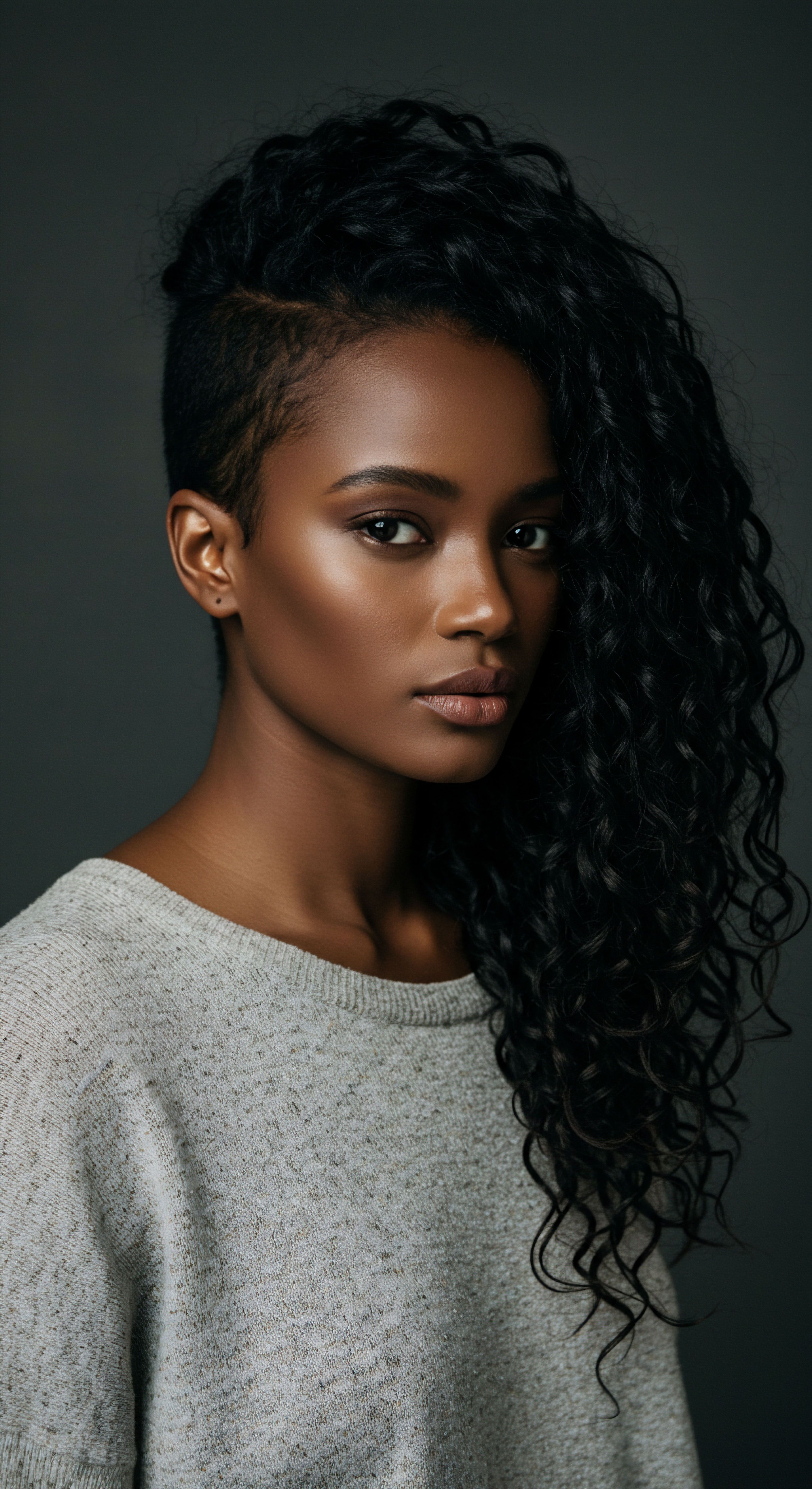
References
- Rele, J. S. & Mohile, R. B. (2003). Effect of mineral oil, sunflower oil, and coconut oil on prevention of hair damage. Journal of Cosmetic Science, 54(2), 175-192.
- Dweck, A. C. (2009). The use of exotic oils in cosmetics. Journal of Cosmetic Science, 60(5), 475-492.
- Burkill, H. M. (1985). The Useful Plants of West Tropical Africa. Royal Botanic Gardens, Kew.
- Nieman, L. K. & Klein, G. L. (2007). African Ethnobotany ❉ A Sourcebook of Information from the Sub-Saharan Africa Region. CRC Press.
- Hall, J. B. & Tomlinson, P. B. (1973). The African baobab (Adansonia digitata L.) ❉ A review of the botanical literature. Journal of the Linnean Society of London, Botany, 67(4), 303-322.
- Goreja, W. G. (2004). Shea Butter ❉ The Nourishing Power of Africa’s Gold. TNC International.
- Ekpa, O. D. & Ikpatt, J. F. (2007). A review of African traditional plant-based cosmetics. African Journal of Biotechnology, 6(20), 2307-2313.
- Schippers, R. R. (2000). African Indigenous Vegetables ❉ An Overview of the Cultivated Species. Natural Resources Institute/ACP-EU Technical Centre for Agricultural and Rural Cooperation.